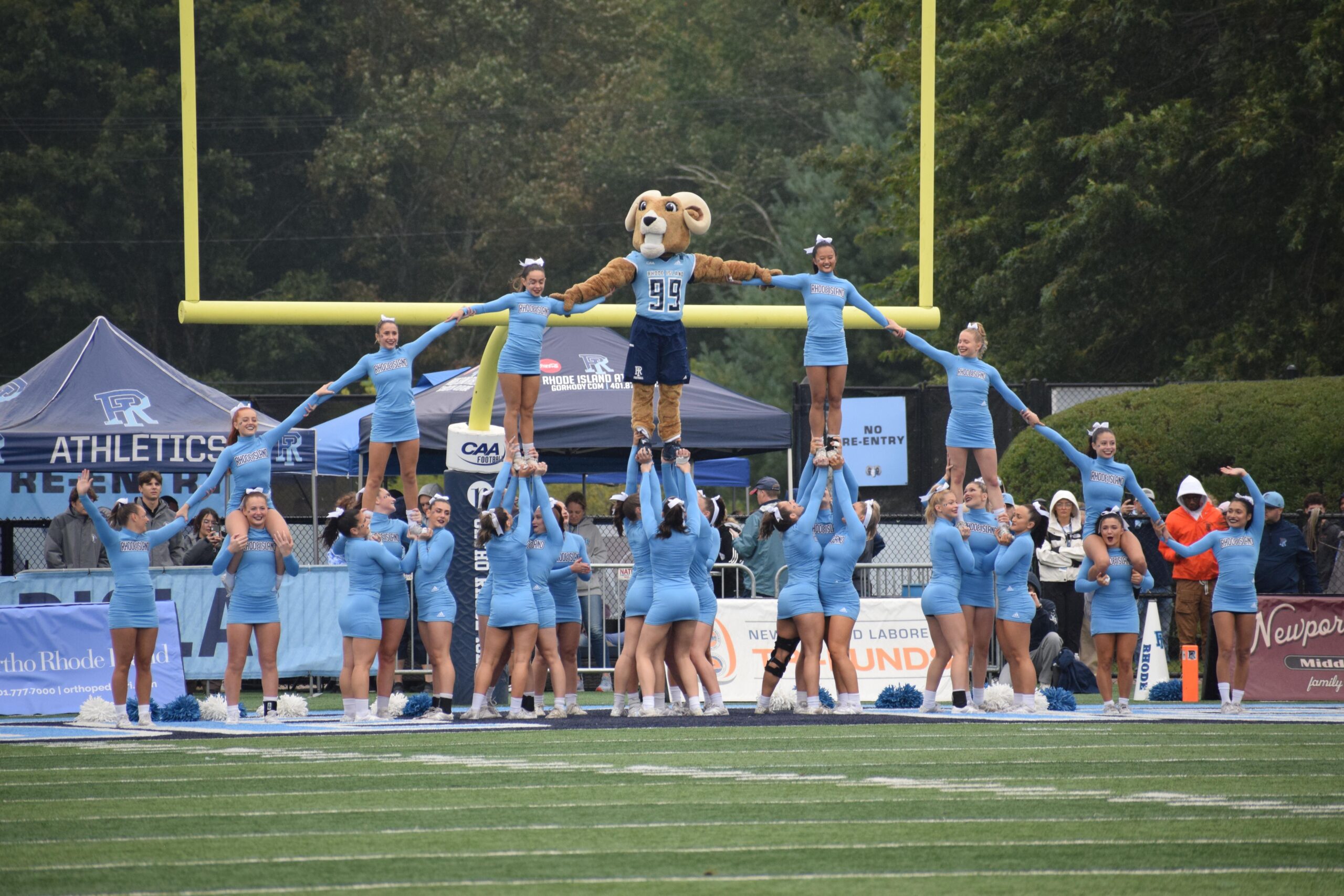The University of Rhode Island’s cheerleading team does much more than shake their pom-poms.
The team, which consists of 36 athletes, practices three times each week on average, performs at every home football and men’s and women’s basketball game and represents the University at many events. They do all of this while preparing for the Universal Cheerleaders Association’s national competition, according to team fourth-year captains Ang Fusco and Kristen Sullivan.
The team’s season begins over the summer, where they practice one weekend each month, Fusco said. During the school year, the team practices on Sundays, Mondays and Wednesdays for three hours per day.
The first two practices of the week are reserved for working on their nationals routines, while Wednesday is when the team works on routines for the football and basketball games.
The team is coming fresh off of football season, which Fusco said went well for them overall.
“I think it was a really good season for us because the football team also did really good,” Fusco said. “The weather also stood out for a while and even our senior game a couple weeks ago, it was nice out, so it was an enjoyable season as a whole.”
Once football season concludes, it’s full-steam ahead into competition season for the cheerleaders. The women compete in the all-girl Division I bracket at UCA Nationals, which takes place each year at the ESPN Wide World of Sports complex in Orlando, Florida.
The team competes in two routines in two categories: game day and traditional mat.
“Traditional mat is more of harder stunts, pyramids and tumbling,” Sullivan said. “And then game day includes a cheer, a timeout. It’s more for audience effect.”
Only about half of the athletes on the team compete at Nationals, according to Sullivan, with 20 women allowed to be on the mat in a traditional routine and 30 for game day. The girls go up against 25 Division I teams, facing schools like West Georgia University and Sacred Heart University.
In a sport like cheerleading, people can often get injured from stunting, tumbling or jumping and having more women on the team allows for their coaches to be able to fill in the blank spots in the routine if there’s an injury, Fusco said.
“Our coach will name the top 20 in October, and then from October until we go to nationals it fluctuates back and forth, and girls will go in and out on a consistent basis,” Fusco said. “So it’s just whatever works best.”
The traditional routine is what the team focuses the most on at practices, Sullivan said. A traditional cheerleading routine consists of three different stunt sequences, two three-level high pyramids, basket tosses, which is three athletes tossing the flyer into the air to perform tricks and three tumbling passes, Sullivan said.
Every level of cheerleading has different score sheets that determine who comes out on top in competition season, Fusco said. While tumbling is something that holds a lot of weight in all-star or high school cheer, the execution of stunts and pyramids hold more weight on a college score sheet.
The team starts recruiting new athletes for the following season as soon as one season starts, Fusco said. They have multiple clinics throughout the year for high schoolers considering URI Cheer to showcase some of their skills prior to try-outs.
Then, athletes who catch the coach’s eye during those clinics get invited for a “recruit weekend,” where prospective athletes can come to Rhode Island, hang out with the team, attend a game and watch a practice.
To prepare for competition season, the team practices every day from Thanksgiving until nationals, which takes place from Jan. 12-14, with only three days off for Christmas.
“We have practice until 4 or 5 p.m. on Dec. 23, we’ll go home for the 24th, 25th, 26th and 27th, and then from the 27th to the day before we leave for nationals, we have two practices a day every day,” Fusco said.
For the majority of the team, their favorite time of year is basketball season, Fusco and Sullivan said. Each of the girls “thoroughly” enjoy watching the men’s and women’s games.
“I think a huge part of our favorite part of going to practice and being with the team is the people itself,” Fusco said. “There’s so many of us that it feels like a sorority almost, like you’re not involved in that part of campus, but it feels like you are because you spend so much time with each other. They become your best friends so quickly.”

